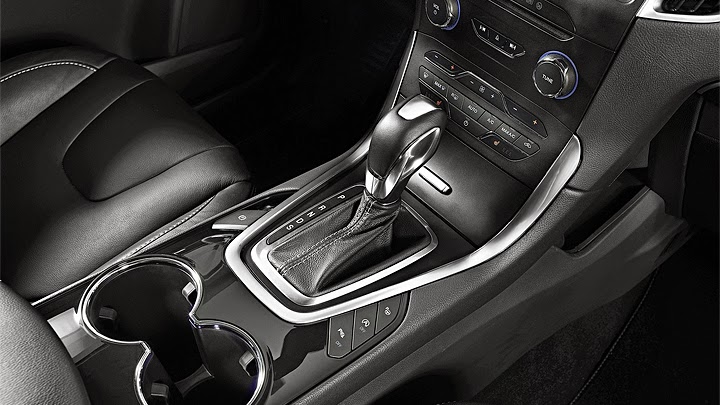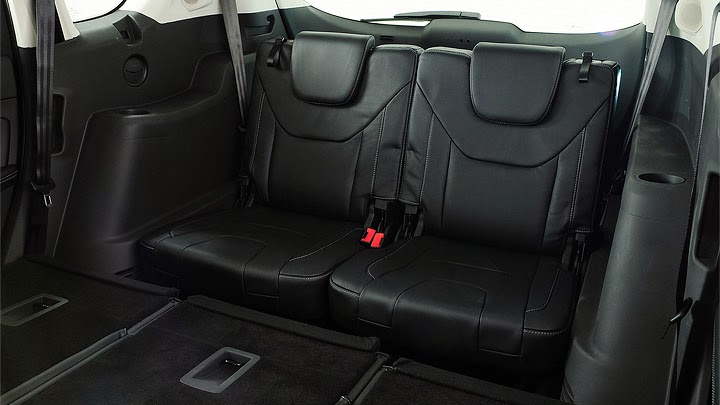
S-Max’s all-new generation is focused in offering a new approach to the minivan concept, just like Renault did in its own way with the also redone-from-scratch Espace. The reasons for that are basically two: one is the constant need to reduce costs wherever it is possible, which affects almost any modern automobile. The other concerns applying some changes to the aforementioned concept in order to defend the category from the crossovers, which have been taking an increasing number of sales from them. The automakers’ intention is to make their respective minivans and crossovers suit different types of customers, instead of being equally attractive to most of them. This is also called reducing the internal competition.
Ford decided to perform this task in a subjective way, by making the crossovers sportier and the minivans fancier, and in an objective way, by restricting sixth and seventh seats to the latter ones. After representing the first “team” with the new Edge, now the spotlights go to the upscale minivan. S-Max received a whole new project, underpinned by the same platform responsible for the current Fusion (which will arrive in Europe as the new Mondeo). The new design repeats all the Kinetic features you have seen at all the latest Fords – and has even more in common with the Vignale concept showed earlier this year – but not for that ceases to look great. Triangular C-pillars, curved roofline and gorgeous tail lights contribute to a nimbler feeling.






However, as any other modern Fords, S-Max never invests in ostentation. Any upscale feelings will come from its roomy cabin’s comfort features, such as electric operation for almost everything: seat folding for second and third rows (Easy Fold system), steering column adjustment and tailgate opening (by moving a foot under the bumper) are included. Also interesting are massaging seats with heating and cooling functions, heated steering wheel and Active Noise Control. As far as design is concerned, S-Max brings as few surprises as outside: Ford’s typical black-and-chrome dashboard divides its functions between physical buttons and a 10” touchscreen, whose 3D graphics control MyTouch, MyKey and Sync systems. But you can also use voice commands.
Safety features include Glare-Free adaptive LED headlights, which are adjusted in order to avoid dazzling oncoming drivers; Intelligent Speed Assist, which improves the regular adaptive cruise control by recognizing traffic signs and interacting with the satellite navigation; Pre-Collision Assist, which warns of impact and hits the brakes if the driver fails to react; Curve and Roll Stability controls, which adjust engine torque and braking in unstable situations; and systems like front split-view camera and rear Cross Traffic Alert, which are already a must-have for most cars of its price range. Everything combined to an all-new body structure, whose strength was increased thanks to a bigger use of what the automaker calls “ultra-high-strength steel”.






When it comes to habitability, the all-new minivan offers adaptive steering, whose variable assistance makes it more nimble on city streets and more stable on highways, and Torque Steer and Active Nibble compensations: these are intended to “cancel out unwanted feedback, forces and vibration”. And you will be able to add a touch of luxury to all this soon, when Ford finally releases its Vignale high-end division. On the other hand, you must be thinking that if improving S-Max so much is good to keep it away from C-Max’s market, it will be difficult to keep selling Galaxy, which is Ford’s biggest minivan. Considering that every automaker needs to “reduce costs wherever it is possible”, as you have read in this very article, it is very probable that Galaxy will be made redundant.
Opening the hood can reveal five different powertrain sets. The gasoline range uses two EcoBoost engines: the 1.5L reaches 158 hp and uses manual transmission, while the 2.0L is good for 237 hp and uses an automatic gearbox. If you prefer to burn diesel, the TDCi family provides two 2.0L units: the new one with 118 hp and the older one with revised 148-hp and 178-hp versions – and the option of Powershift transmission. All S-Max options use start/stop, Smart Regenerative Charging, Active Grille Shutter and Active Thermal Management systems, in order to improve fuel efficiency (the latter improves the warm-up time). Besides, the vehicle will have the option of all-wheel-drive for the first time. The new S-Max will go on sale in the third trimester of 2015.